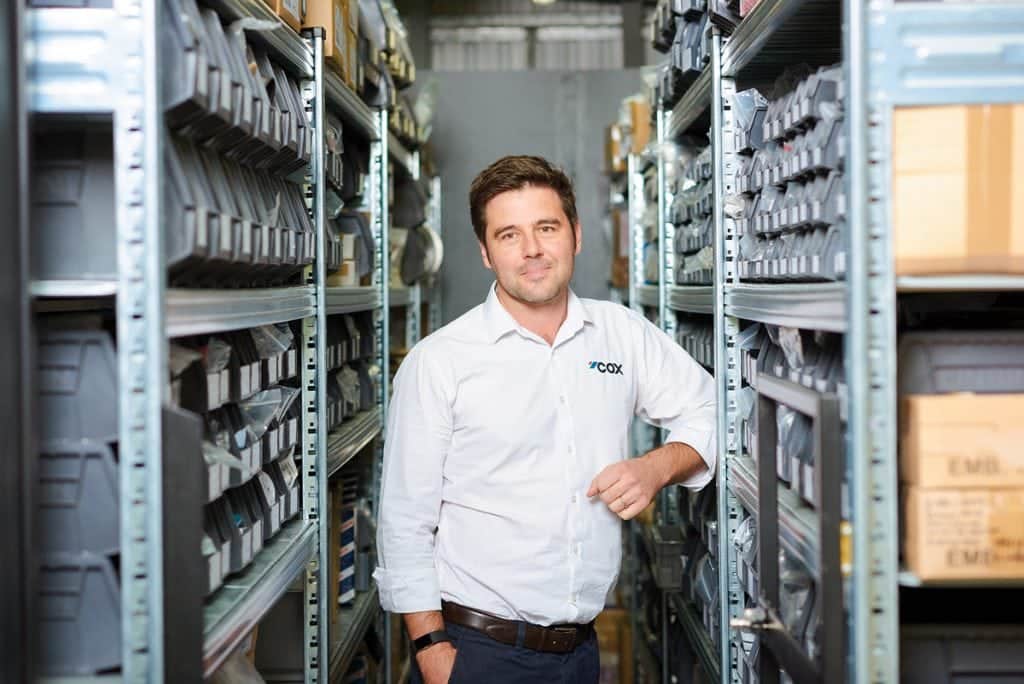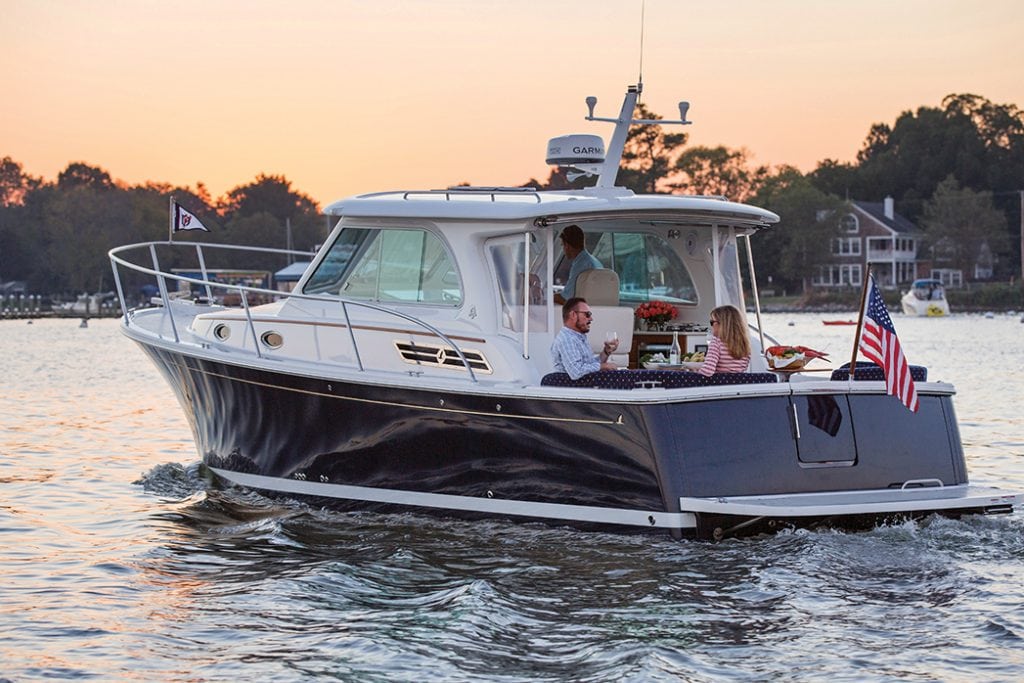A new Diesel Outboard from Cox Powertrain is a real game changer. Introducing the Cox Diesel Outboard CXO300.
Several years ago, I was touring a superyacht with an enormous tender garage. One of the tenders was an Intrepid center console. But instead of the customary outboard engines, the Intrepid was powered with an inboard diesel engine. This was so it could be refueled directly from the superyacht rather than have to carry separate fuel tanks. At that time, outboard diesel engines were nonexistent. That’s no longer be the case. Come November, one of the marine industry’s most talked about engine developments comes to fruition: the Cox Diesel Outboard CXO300.
Cox Powertrain, a British diesel engine innovator, has for the last decade followed an intense development program to launch a high-powered, 300-horsepower diesel outboard. Their game-changing CXO300 is the world’s highest power density diesel outboard engine. And it looks to completely shake up the U.S. recreational boating market this year.
All About Innovation
The British company initially won a contract from the British Ministry of Defence (MoD) to develop a new concept diesel outboard for use on its fast response navy vessels. The final engine concept is based on a 4-stroke, V8 architecture that offers users higher fuel efficiency, greater range, higher torque, and a substantial total cost of ownership advantages.
The British manufacturer received an overwhelmingly enthusiastic response from recreational boaters, particularly in the U.S. “We have spent the last two years exhibiting at many high-profile shows around the world, but our presence at U.S. recreational shows, such as the Fort Lauderdale International Boat Show and Miami International Boat Show, where recreational boating and saltwater sports fishing are so popular, has generated an unprecedented response,” says Cox Powertrain’s global sales director, Joel Reid. “Recreational users appreciate that they can also benefit from the high torque and extended range that they would get from the CXO300.”
Torque it
According to the manufacturer, the CXO300 has 100 percent higher peak torque at the crankshaft than the leading gasoline 300-hp outboards and 60 percent higher when compared with a leading 350-hp; this difference is amplified when looking below the mid-range rpm. The increased low-end torque will push heavy loaded hulls through rough waters with less strain on the engine and improve even further the fuel performance in comparison to similar gasoline outboards that are notorious for their lack of low-end torque.
Larger vessels will also benefit from the higher torque curves both at the low end and the high end. This translates to the customer in the form of cost advantages. For instance, where you traditionally might use a quad 300-hp installation or triple 350s, you can now operate with triple CXO300s and enjoy fuel savings at the same cruise speed. The engine offers fuel savings of approximately 25 percent in comparison to a similar 300-hp gasoline outboard. Therefore, allowing boaters to go that much further. It’s predicted that only about 10 percent of Cox’s engines will be single installations with most craft having multiple installations. As a result, Cox will be offering three lower unit lengths (25-,30- and 35-inch) and full joystick capabilities with DPS, GPS and cruise control.
Faster Efficiency
Reid adds that fuel savings and higher torque are not the only advantages of this engine. “The CXO300 is designed to live two to three times longer than current outboard engines. We can ease the servicing by allowing a ‘dry’ service every one thousand hours. That’s about once a year, whichever comes sooner,” explains Reid. “Also, users won’t have to worry about buying standard rotation or counter rotation gearboxes. We make them all the same. You just tell your engine in what direction you want it to spin from the display at installation. Also, the CXO300 spline spec is one and a quarter inch, nineteen tooth, which means it is compatible with Mercury props.”
For such an investment to be a success and to build and maintain trust with its customers, Cox knows that its unique diesel engine concept must ultimately be supported by the highest quality sales and service network. “Over the last two years, we have worked really hard to create a premium global network of distributors. They are some of the world’s most prominent marine diesel specialists. Our U.S. distributor reach is vital, so we have made very strong and strategic appointments in key selling areas such as Florida, South Carolina, Texas, Louisiana, New Jersey, California, Massachusetts, and Canada. We want to make sure that customers receive a service experience that goes way beyond their expectations. It’s what makes us stand out from our competitors and truly make Cox the iconic brand that it deserves to be,” says Reid.
A Diesel Revolution?
Cox is led by ex-Cosworth CEO Tim Routsis. His background lies in engine development in global automotive, aerospace and marine markets. The company’s mission is to deliver a completely new concept in diesel engines has the potential to revolutionize the marine market. Routsis is understandably proud of how the CXO300 has become one of the marine industry’s most eagerly awaited new engines. “The CXO300 development has benefitted from our strong pedigree in Formula One racing and premium automotive design,” says Routsis. “We have a highly skilled team of engineers. They possess decades of experience in combustion engines and an understanding of what the market wants.”
The CXO300 will retail for $50,000. However, users could save up to 45 percent on the lifespan of the outboard. That’s based on heavy use of 6,000 hours with an overhaul at 3,000 hours. Diesel outboards have up to three times the lifespan of their gasoline counterparts.
For more information and a list of U.S. distributors visit coxmarine.com.
By L.N. Evans, Southern Boating
July 2018













